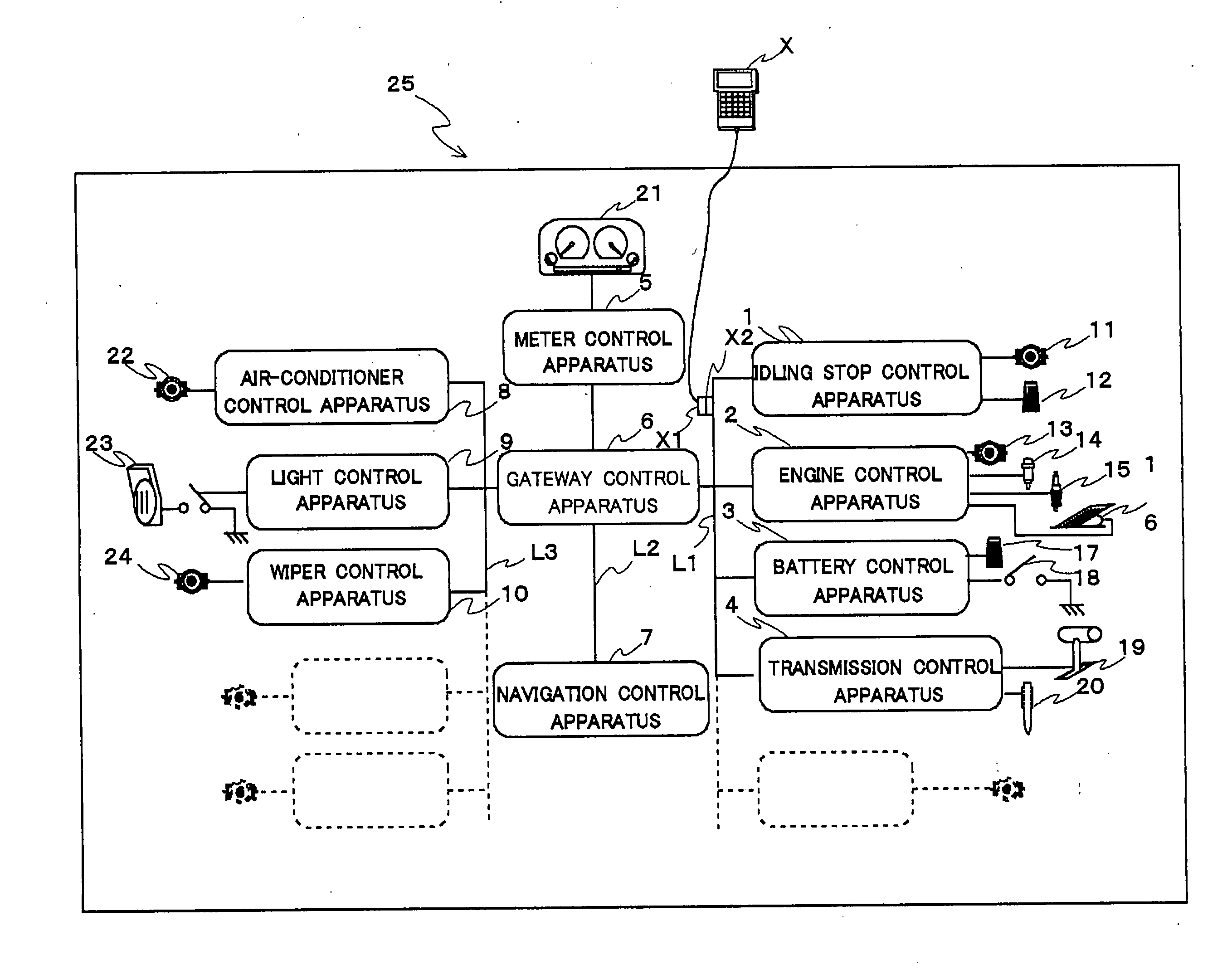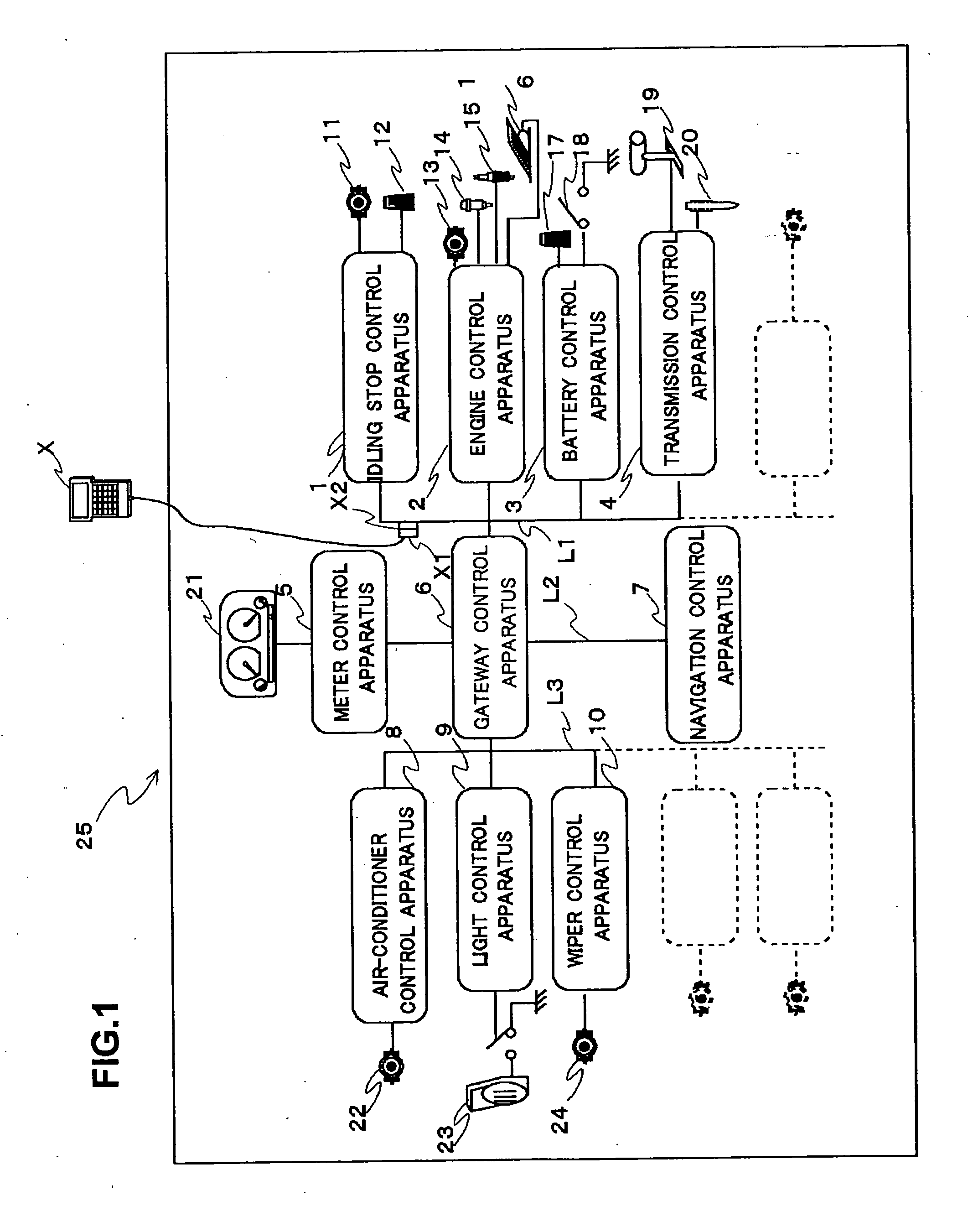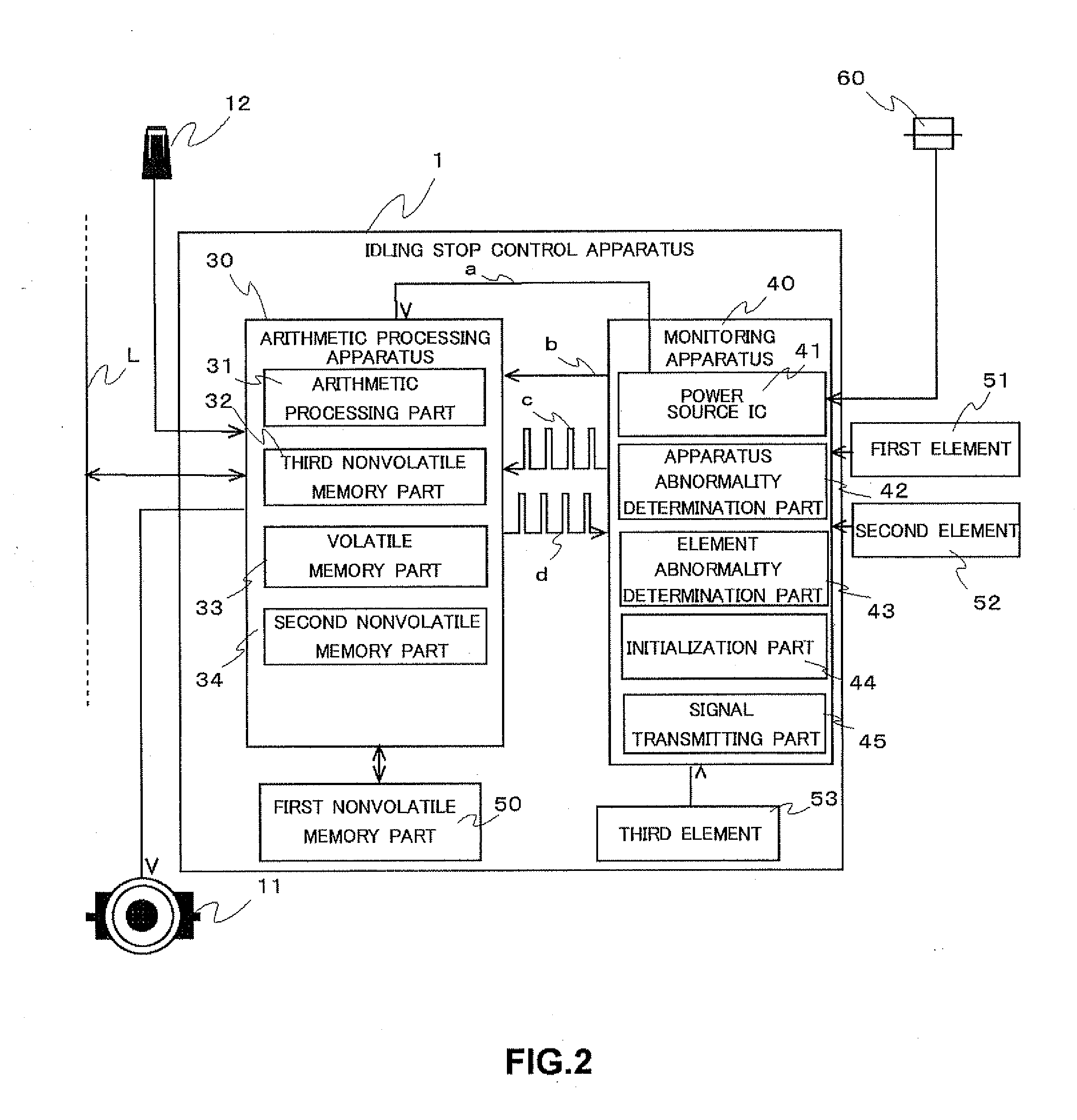In-vehicle control apparatus
a technology of in-vehicle control and control apparatus, which is applied in the direction of engines, machines/engines, instruments, etc., can solve the problems that the cpu in the in-vehicle control apparatus may not appropriately identify and record, and achieve the effect of avoiding misidentification
- Summary
- Abstract
- Description
- Claims
- Application Information
AI Technical Summary
Benefits of technology
Problems solved by technology
Method used
Image
Examples
modification example 1
[0202]In the previous sections explaining the Sequence 6 in a case of occurrence of user operation and the Sequence 7 in a case of occurrences of user operation and abnormality in a predetermined element, it is explained that the control for stopping the idling stop function is implemented when the arithmetic processing part 31 receives the hood switch-off signal representing that the user opens the hood. However, as shown in FIG. 3, the control for stopping the idling stop function may be implemented when the arithmetic processing part 31 receives the user switch-off signal representing that the user ends the in-vehicle control system with the user switch.
[0203]Moreover, it is explained that, in order to record the abnormality content, the factor counters of the runaway process abnormality, of the reduced-voltage abnormality, of the abnormality in a predetermined element, and of user operation are set in the first nonvolatile memory part 50, and the arithmetic processing part 31 ad...
modification example 2
[0204]In the previous sections explaining the Sequence 6 in a case of occurrence of user operation and the Sequence 7 in a case of occurrences of user operation and abnormality in a predetermined element, it is explained that the control for stopping the idling stop function is implemented when the arithmetic processing part 31 receives the hood switch-off signal representing that the user opens the hood. However, the control for stopping the idling stop function may be implemented when the arithmetic processing part 31 receives a signal relating to the vehicle state, in other words, a demand for stopping of the idling stop function from one of the other in-vehicle control apparatuses (e.g., the battery control apparatus 3 and the transmission control apparatus 4), not the signal of a user operation.
[0205]Moreover, it is explained that, in order to record the abnormality content, the factor counters of the runaway process abnormality, of the reduced-voltage abnormality, of the abnor...
modification example 3
[0206]In the previous sections explaining the Sequence 6 in a case of occurrence of user operation and the Sequence 7 in a case of occurrences of user operation and abnormality in a predetermined element, it is explained that the control for stopping the idling stop function is implemented when the arithmetic processing part 31 receives the hood switch-off signal representing that the user opens the hood. However, the control for stopping the idling stop function may be implemented when the arithmetic processing part 31 receives the impact detection signal that is detected in a case where the vehicle 25 collides against an external object.
[0207]Moreover, it is explained that, in order to record the abnormality content, the factor counters of the runaway process abnormality, of the reduced-voltage abnormality, of the abnormality in a predetermined element, and of user operation are set in the first nonvolatile memory part 50, and the arithmetic processing part 31 advances the factor ...
PUM
 Login to View More
Login to View More Abstract
Description
Claims
Application Information
 Login to View More
Login to View More - R&D
- Intellectual Property
- Life Sciences
- Materials
- Tech Scout
- Unparalleled Data Quality
- Higher Quality Content
- 60% Fewer Hallucinations
Browse by: Latest US Patents, China's latest patents, Technical Efficacy Thesaurus, Application Domain, Technology Topic, Popular Technical Reports.
© 2025 PatSnap. All rights reserved.Legal|Privacy policy|Modern Slavery Act Transparency Statement|Sitemap|About US| Contact US: help@patsnap.com



